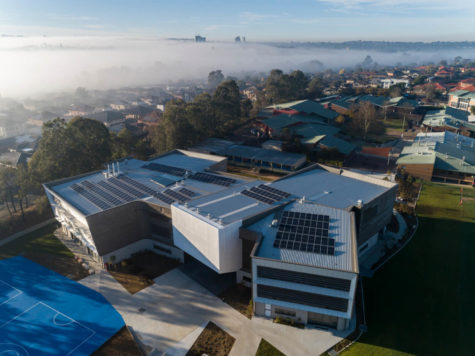A New Perspective of Space
September 2, 2022
Since its launch on Christmas day, NASA has been eagerly waiting for the new James Webb Telescope to take more sensitive images in deep space, for new implications of the universe. Yet, astronomers had to wait until July 11th this year to receive some of their first images with the telescope. Each one filled with oceans of stars, the first 4 images tell us deep stories about our universe.
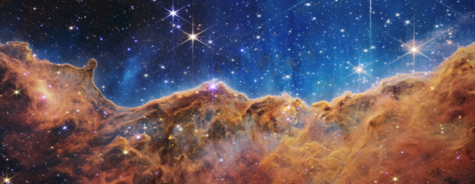
Carina Nebula
The first photo released, also known as ‘The Cosmic Cliffs’, is described as ‘craggy mountains on a moonlit evening’, showing all the galaxies that overflow within and outside of our solar system. In reality, it is the edge of galaxy NGC3224, with a cavity that has been carved from concentrated ultraviolet radiation and stellar winds from the birth of hot, young stars located above the area shown in this image.
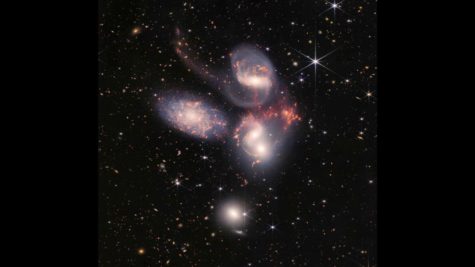
Stephan’s Quintet
Stephan’s quintet is a group of five galaxies, being one of the telescope’s largest images to date. This singular image is made up of about 1,000 different image files and has over 150 million pixels. While they are called a quintet, only four galaxies are placed near each other. NGC 7320, the galaxy on the far right, is 40 million lightyears away from Earth, while the other four are 290 million lightyears away. This image provides new insights into how galactic interactions may have driven galaxy evolution in the early universe.
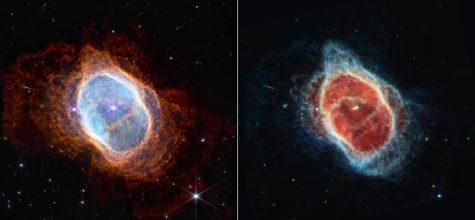
Southern Ring Nebula
In the two images taken, Webb revealed the dying star amid dust and debris. Webb captured with two cameras the planetary nebula NGC3132, or informally known as the Southern Ring Nebula. It exhibits two stars that are locked in a tight orbit, with the dimmer star (at the centre of both images) sending out rings of gas and dust in all directions. This was only revealed through the image on the right, which shows for the first time that the second star is surrounded by dust. The brighter star, in comparison, is in an earlier stage of its stellar evolution, with predictions in the near future, it will begin to eject its own planetary nebula.
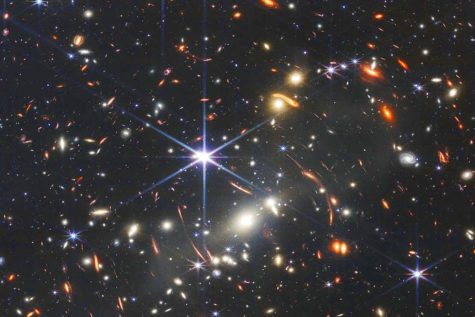
SMACS 0723
This incredibly detailed image of the galaxy cluster SMACS 0723 is known as Webb’s First Deep Field. Webb’s perspective has seen the first appearance of thousands of galaxies, including the infrared universe’s most indistinct objects. To put it in a unique perspective, this picture, showing such a tiny part of our enormous universe is like a grain of sand stretched out on an arm’s length.
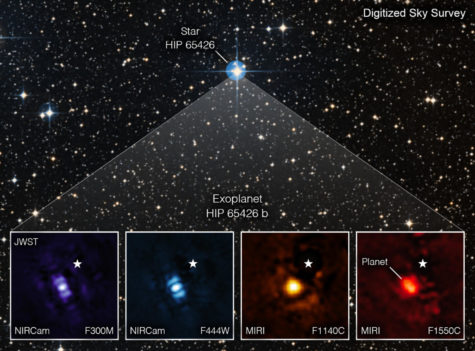
Yet, within recent days, NASA has released even more to the public on the Webb’s image capabilities. On 1st September, the James Webb Telescope captured its first images of an exoplanet. Being described as a ‘super-Jupiter’, HIP 6426 b is an exoplanet that orbits a star 400 light years away from Earth. It is a relatively young and hot star, meaning it was easy to image. It had previously been observed by ground-based telescopes, but Webb was able to perform 10 times better, being much more sensitive than our previous images. More is expected to come in the next few weeks.








